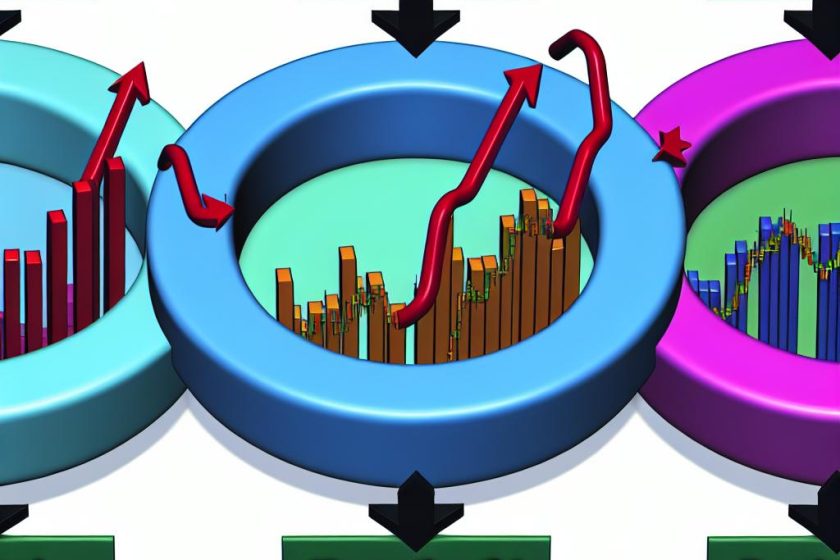Understanding Stock Market Cycles
The stock market functions as a sophisticated and complex financial system that undergoes cyclical patterns. These cycles are typically characterized by three main phases: boom, bust, and recovery. Understanding these dynamics is essential for investors aiming to make informed decisions in often unpredictable markets. Each phase is driven by a multitude of factors such as economic conditions, investor sentiment, and external events which collectively shape the market’s trajectory.
Boom Phase
The boom phase represents a period of rapid expansion characterized by escalating stock prices. This phase usually aligns with a robust economic environment where consumer spending surges alongside rising corporate profits. During boom periods, investor confidence tends to be high, further fueling investments and contributing to upward trends in stock prices.
Several factors that typically spur the boom phase include:
Low-interest rates: During periods of low-interest rates, borrowing becomes more accessible for both consumers and businesses. This encourages spending and investment, as entities take advantage of cheaper capital to expand, innovate, or consume.
Strong economic indicators: Measures such as gross domestic product (GDP) growth and low unemployment rates often signal a healthy economy. These indicators boost investor confidence, as growth in GDP implies rising production and consumption, while low unemployment ensures a steady income stream for consumers.
Positive corporate earnings: When companies consistently report high profits, they become attractive prospects for investment. Positive earnings reports often encourage further investments, as they provide tangible evidence of company growth and profitability.
The boom phase, while offering lucrative opportunities, also demands caution as it can sometimes lead to overvaluation and speculative investment behaviors. Astute investors carefully analyze fundamentals to avoid overpaying for assets.
Bust Phase
The bust phase often follows a boom and is identified by declining stock prices and negative investor sentiment. It can be triggered by various causes, including economic downturns, inflationary pressures, or unforeseen geopolitical events that collectively incite panic among investors. During this phase, widespread selling of stocks typically accelerates price declines.
Key elements in the bust phase are:
Rising interest rates: As interest rates climb, borrowing costs increase for both companies and consumers. This, in turn, reduces disposable income and spending, straining economic growth and corporate profit margins.
Negative economic news: The emergence of adverse economic indicators, such as high unemployment rates or signals of a potential recession, can diminish investor confidence and lead to the withdrawal of investments from the market.
Panic selling: The sharp sell-off of stocks is often driven by fear rather than rational decision-making. Such actions can amplify market declines, further eroding investor confidence.
Historic Examples of Busts
The 2008 financial crisis is a remarkable instance of a bust phase, primarily triggered by the collapse of the housing market, which cascaded into a profound global economic downturn. Similarly, the dot-com bubble in the early 2000s is another exemplar, where speculative technology investments led to an unsustainable surge in stock prices followed by a precipitous drop.
During bust phases, maintaining a level-headed approach is paramount for investors. Overreacting to market fluctuations can lead to ill-timed decisions, while staying informed and maintaining a long-term perspective can help mitigate risks.
Recovery Phase
Subsequent to the bust phase, stock markets eventually reach a bottom, after which recovery begins to take shape. Recovery is marked by gradual improvements in stock prices and renewed investor confidence. Economic policies, including fiscal stimuli and monetary easing, often play pivotal roles in facilitating and hastening the recovery process.
During the recovery phase, investors should note:
Increased investment: As confidence is restored, investors slowly return to the market, propelling stock prices upward and stabilizing market conditions.
Economic reforms: Governments and central banks may introduce measures such as interest rate cuts or stimulus packages to rejuvenate economic growth and bolster market activity.
Market adjustments: Companies may adapt by consolidating or restructuring to align with the new economic landscape, ensuring improved efficiency and preparedness for future growth.
Importance of Patience and Strategy
Successfully navigating stock market cycles necessitates a combination of patience and well-crafted investment strategies. Investors should prioritize long-term growth objectives while remaining vigilant to short-term market volatility. Portfolio diversification is a key strategy to mitigate risks associated with cyclical swings, as it involves spreading investments across various asset classes and sectors. Moreover, staying informed about economic trends and engaging with market analysis are vital practices that enable investors to stay ahead of potential shifts in market conditions.
For those seeking to delve deeper into market cycles, resources like Investopedia offer comprehensive insights, and consulting with financial advisors can provide personalized strategies tailored to individual investment goals and risk appetites.
Conclusion
Recognizing the nuances and stages of stock market cycles is of utmost importance for investors aiming to optimize returns while minimizing potential risks. By understanding the dynamics inherent within the boom, bust, and recovery phases, investors can enhance their ability to navigate the intricate complexities of financial markets. This understanding enables informed decision-making, fostering a more strategic approach to investment that aligns with both market trends and personal financial objectives.
This article was last updated on: June 23, 2025
